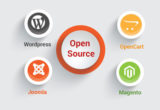Top 15 Technologies that will Change the World by 2025
How will technology change the planet, our mother earth within the next five years? Will it be good? Or lead to more destruction, pollution and warfare? In the upcoming five years, will there be enough fresh air to breathe or do we need to carry tree behind us? Will there be quantum tech and nanotech as if in Avengers? So much of dancing questions. Let’s find out about our tech future in and about five years.
It is very exciting to work out the pace and transformative potential of today’s innovative technologies being applied to unravel the world’s most pressing problems. Such as, feeding a world and growing population, improving access to and quality of healthcare and significantly reducing carbon emissions to arrest the harmful effects of temperature change. The subsequent five years will see profound improvements in addressing these challenges as entrepreneurs, the investment community and therefore the world’s largest enterprise R&D organizations concentrate on developing and deploying solutions which will deliver positive results.
Well, the COVID-19 pandemic has provided a tough lesson in exactly how susceptible our world is today to human and economic turmoil. It’s also, perhaps for the primary time in history necessitated global collaboration, data transparency and speed at the best levels of presidency so as to reduce a right away threat to human life. History are our judge, but despite the heroic resolve and resiliency on a rustic by country basis, as a world we’ve got underperformed. As a worldwide community and thru platforms just like the World Economic Forum, we must still bring visibility to those issues as well as recognize and support the opportunities for technology and innovation which will best and most rapidly address them.
1.AI-optimized manufacturing
Significant global travel and opaque supply chains are a slice of today’s established order. It results in large amounts of wasted energy, materials and time. Accelerated partly by the long-term shutdown of international and regional pass due to COVID-19, companies are soon going to rapidly adapt cloud-based tech to intelligently aggregate and transform throughout their supply chains.
By 2025, the important stream of information and advanced algorithms will make the manufacturing lines to produce more level of outputs and merchandise quality. Not only that, it will reduce manufacturing waste up to 50%. As a result, we are going to enjoy higher quality products, produced faster, at lower cost to our pocketbooks and also the environment.
2.Future Environment
In 2025, carbon footprints are viewed as socially unacceptable, very similar to drink driving is today. The COVID-19 pandemic will have focused the public’s attention on the necessity to require action to handle threats to our way of life, our health and our future. Growing pollution will drive government policy and behavioral changes crazy. And the carbon footprints will increase tremendously, posing a threat to whole world. Individuals, companies and countries will seek the quickest and most affordable ways to attain net-zero – the elimination of their carbon footprint.
The creation of a sustainable, net-zero future is built through a far-reaching energy transformation that significantly reduces the world’s carbon emissions, and thru the emergence of an enormous carbon management industry that captures, utilizes and eliminates carbonic acid gas. We’ll see a diversity of recent technologies geared toward both reducing and removing the world’s emissions – unleashing a wave of innovation to match with the commercial and digital Revolutions of the past.
3.Quantum Computing
Imagine, a tiny bit of a thing on an already miniscule computer chip. Something microscopic with the facility to think sort of a computer without the necessity of complex circuitry and capable of being moved by light or sound. That’s quantum technology in simplified versions. Quantum tech is derived from physics for computer applications. QED (or Quantum electrodynamics), defines the interplay matter and light-weight. QED-circuits take this relation to the pc chip by enhancing the interlink for circuitry in machines.
Phonons is a sound-activated quantum vibration, that develops in circuitry and motor machines at the chip level. All these advancement in quantum technology are proceedings towards the zero sized intelligence techs. Scientists merge science and technology into something, which might have ample implications on the pcs, communication devices. This techs enormity comes in a tiny atomic sized packet.
By 2025, quantum computing will have outgrown its infancy, and a primary generation of business devices are going to be able tackle meaningful, real-world problems. One major application of this new reasonably computer is the simulation of complex chemical reactions, a strong tool that release new avenues in drug development. Quantum chemistry calculations will aid the design of materials with desired properties. Right now, most of it is unproven and error, which shows hoe time consuming and it is. Quantum computers may soon be ready to change this. They’ll significantly shorten development cycles and reduce the prices for R&D.
4.Medical and Health
By 2025, hospitals and medicals will adopt advanced health measures and science. It will be full of plant rich and nutrient dense diets. This is going to be powered by AI and systems biology-based technology for bringing it into reality. The bio-based tech will grow our knowledge of specific dietary phytonutrients for better human health and other outer comes. Healthcare paradigm shift to prevention through diet.
After the pandemic of 2020, consumers are more tuned in to the importance of their underlying health and can increasingly demand healthier food to assist support their natural defenses. Armed with profound understanding of nutrition, the worldwide food industry can respond by offering a broader range of product options to support optimal health outcomes. The healthcare industry can respond by promoting earth’s plant intelligence for more resilient lives and to incentivize people to require care of themselves in an endeavor to scale back unsustainable costs.
5.The World of 5G
5G will enhance the worldwide economy and save lives. Overnight, we’ve experienced a pointy increase in delivery services with a necessity for “day-of” goods from providers like Amazon and Instacart – but it’s been limited. With 5G networks in situ, tied directly into autonomous bots, goods would be delivered safely within hours. Wi-Fi can’t scale to satisfy higher capacity demands. Quarantine has moved classrooms and businesses into digital screen. It has highlighted one major problem which is poor network quality. The low latency 5G networks will definitely resolve these issues, such as, the lack of network and offer high-capacity services like telesurgery, telehealth and other ER services.
6.Nano Technology
Technology at the Nano level, or nanotechnology, allows for unbelievable precision and some way to repeat the work of nature at its most simple functioning, but just how small could be a Nano? In keeping with the National Nanotechnology Initiative, a sheet of paper is 100,000 nanometers thick and there are 25.4 million Nanos in 1 inch. Could you believe a nanometer is one-billionth of a meter? How mini is that!
Wondering, how is that this impacting technology and also the future? in barely about every field, nanotechnology is getting used for innovations in engineering, medical devices, imaging, computing and plenty of more. Nanomedicine is one of the sectors which is experiencing rapid and dramatic growth. Because many illnesses and disorders within the body occur at the cellular level and grow as ruled by the formation of genetic makeup, nanotechnology has the aptitude to treat at the very root of the condition, instead of after it’s fully spread throughout the body. It is both preventative and curative because treatment reaches the narrowest and most minuscule centers of control. Neurosurgery and gene therapy are the two areas within Nano med, which suites for nanotools and technology.
Taking nanotechnology from a thought to reality means having the ability to create some very, very fine and small-scaled tools. Nanotools must be assembled at the molecular level so as to be tiny enough to perform work the Nano level, and often, the work of nanotechnology is so specialized that the tools must be modelled and made specifically for every job. Handling the tools involves careful and minute planning, as well, due to their delicate balance and scale. In generations to return, those skilled in molecular nanotechnology are in high demand within the workforce.
7.Cancer – Cancel it
Technology gives data, data accelerates knowledge, and knowledge empowers brain. In tomorrow’s world, cancer will be like any other diseases and be treated like all chronic health condition. The future of the tech will enough precise to identify cancer and defeat it. In other words, a replacement normal will emerge in how we are able to manage cancer. We could be quick at doing proactive screening with more advanced diagnostics innovation, like genome sequencing technology or liquid biopsy. The higher simple testing, higher the accuracy but cheap at the cost.
Early detection and intervention in common cancer types won’t only save lives but reduce the financial and emotional burden lately discovery. There will be a huge revolution in treatment made by technology. Gene editing and immunotherapy will head into greater cause with less side effect. With advances in early screening and treatment, cancer won’t remain any cursed diseases, causing panic people.
8. Robotic retail
Historically, robotics has splined many industries, while some select sectors – like grocery retail – have remained largely untouched. With the utilization of a brand-new robotics application called ‘micro fulfillment’, Grocery retailing will now not look the identical. The robotic employment will be there at a ‘hyper local’ level, which might disturb this 100-year-old, $5 trillion industries. And its stakeholders will experience significant but important changes. Retailers will operate at the next order of magnitude on productivity, which is able to successively lead to positive and enticing returns within the online grocery business (unheard of at the moment). This technology also unlocks broader access to food and a stronger customer proposition to consumers at large: speed, product availability and price. We predict that value is equally captured by retailers and consumers as online.
9.Virtual Spaces
A blurring of physical and virtual spaces is something cool. One major thing the present pandemic has taught us is how important tech is for facilitating communication – not only for work purposes, but also for building real emotional connections. Within the next few years, we will expect to work out this progress accelerate, with AI technology built to attach people at a personality’s level and drive them closer to every other, even when physically they’re apart. the road between physical space and virtual will forever be blurred. However, it’s not as simple as just providing these services – data privacy will need to be prioritised so as to form confidence among consumers. At the start of the COVID-19 pandemic we saw lots within the news about concerns over the safety of video conferencing companies. These concerns aren’t going anywhere and as digital connectivity increases, brands simply can’t afford to offer users anything but full transparency and control over their data.
10.Advanced Architecture
The future of architecture has already begun. It is a synchronized sequence of producing processes, delivering control, change and production at scale. The future architecture will be faster, safer and cheaper. One can easily built homes, offices and others at anywhere in the cities or beyond. As rich datasets are developed through the web, AI and image capture, some would say its vision coming into life.
Using data to deeply understand industry processes is profoundly enhancing the power of field professionals to trust their instincts in real-time higher cognitive process, enabling learning and progress while gaining trust and adoption. Actionable data sheds light where we couldn’t see before, empowering leaders to manage projects proactively instead of reactively. The exact precision in planning and execution helps professional to build with the environment rather than without it. That’s the long run of construction. And it’s already on the way.
11.Dark Networks
Members of Anonymous (seen here wearing plotter masks) hacked the French presidential Elyse Palace electronic computer in early 2012, and briefly knocked the FBI and Justice websites offline in retaliation for the U.S. shutdown of file-sharing site Mega upload. As the world gets smaller by sharing more and more of the identical cyberspace and social tools, we are, prefer it or not, becoming a much bigger collective target for the bad guys. While our data puts us all “out there” in some ways, that very same data enables those involved in dark networks and activities to induce lost and tackle false, covert identities so as to plan bigger and greater attacks.
Anonymous is one such dark group involved in “hacktivism,” having found its way into sensitive stores of data from the likes of the FBI, Visa and Mastercard, and government websites from the U.K. to China, causing large-scale, disabling computer terror. It functions as a collective of the many individuals and spreads its login and computer activities thin enough to steer authorities in too many directions to trace, and its acts target everything from politics to commerce.
As incidents of cyber-attacks and even infrastructure attacks to water systems and electrical grids grow, billions of dollars are stolen and billions of individuals are in danger every year. this might result in increased cyber-insecurity, or widespread fear of the very technology people have to set about everyday commerce and communication.
12.Carbon Free Future
Gigaton-scale CO2 removal will help to reverse temperature change. A rescale of negative emission technologies, like greenhouse gas removal, will remove climate-relevant amounts of CO2 from the air. this may be necessary so as to limit heating to 1.5°C.
While humanity will do everything possible to prevent emitting more carbon into the atmosphere, it’ll also do everything it can so as to get rid of historic CO2 from the air permanently. Carbon removal is to be scaled up to the gigaton level. It’ll empower individuals to own a right away and climate-positive impact on the extent of CO2 within the atmosphere. it’ll ultimately help to stop heating from reaching dangerous levels and provides humanity the potential to reverse global climate change.
13.AI-based Medicines
There will be a huge replacement era in medicine. As there has always been on a hunt to collect more knowledge and understanding of human biology for better clinical decision-making. AI is that new tool that may enable us to extract more insights at an unprecedented level from all the medical ‘big data’ that has never really been fully taken advantage of within the past. it’ll shift the globe of drugs and the way it’s practiced.
14.Closing the Wealth Gap
Improvements in AI will finally put access to wealth creation close of the masses. Financial advisors are the main persona of wealth management. They are also called as knowledge workers. These workers use customized strategies to grow a tiny low nest egg into a bigger one. Only con is these financial advisors is that they are quite expensive to hire. Who would like to give money and hire someone to teach about wealth management?
Historically, wealth management advice has not been given to who needed most. Computer science is progressing at such a speed that the wealth management strategies by these financial advisors can be able to access through technology.
15.Robotics and Surrogates
While avatars and surrogates were once just imaginary and computer games, now they are usurping to be in more active roles, in replacement for humans and livings. Maybe you are not comfortable with all of the futurist predictions and even this rate of technological advance, and that is OK. you’ll be able to be yourself and interact within the world during a fairly low-tech way while allowing a surrogate, avatar or robot to measure your online and tech life for you. Even the U.S. Defense Advanced Research Projects Agency (DARPA) has budgeted countless dollars to make avatars that may act as surrogates for real, live soldiers.
While avatars and surrogates were once the things of games, video game and computer interfacing, they’re absorbing more and more active roles as replacements for living breathing humans. Or, are they enhancements for humans? Fully-realized robotic machines became more and more widespread in medical technology and scientific development, both within the lab and in hospitals, enabling those with paralysis to maneuverer limbs, as an example. “Living” life with ‘second life’ surrogates is probably going to become more and more common a day for those folks in less specialized fields, too.
Conclusion :
Forecasting the longer term of technology is for dreamers who hope to innovate better tools and for the mainstream those that hope to profit from the new and improved. Many innovations are born within the lab and never make it into the patron market, while others evolve beyond the pace of putting good regulations on their use.
In this article, we saw 15 technology that would change the world with in the year 2025. These new techies will definitely replace the old ones and make the public love them. It will be very interesting to see how the future will turn out.



